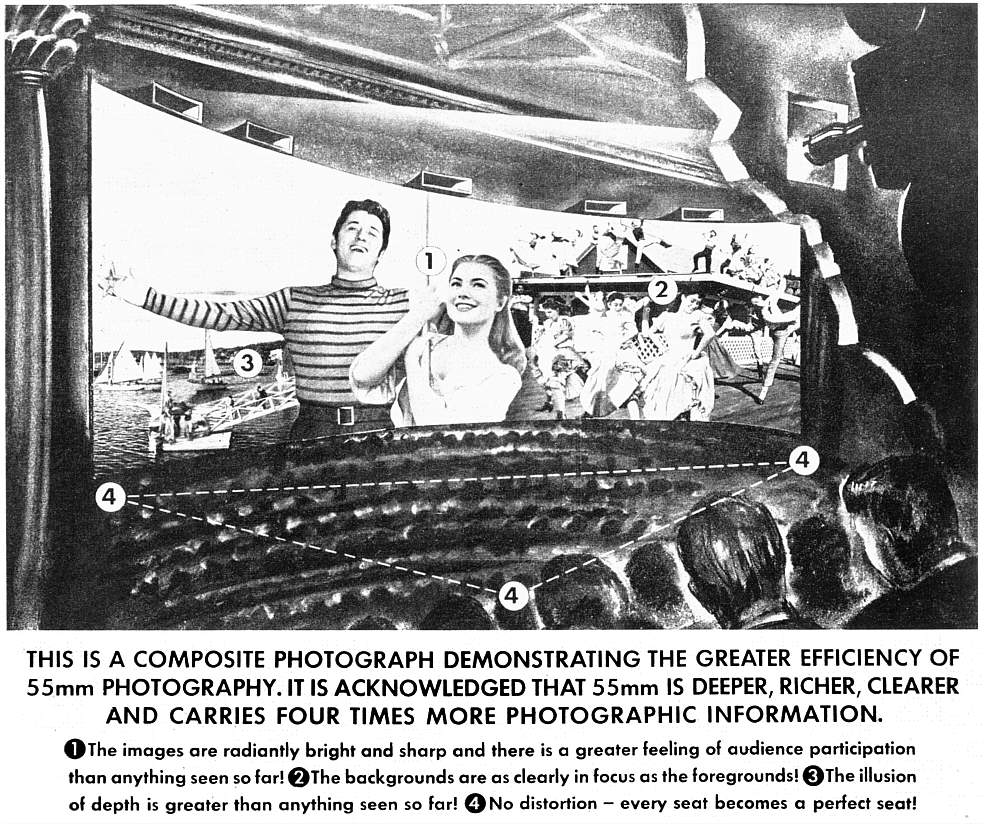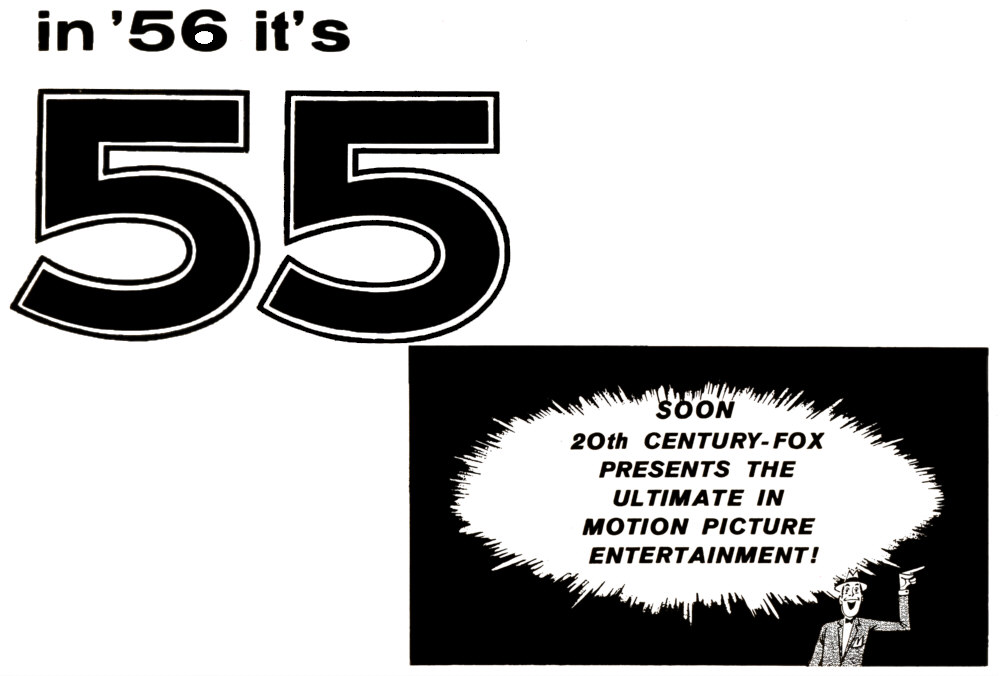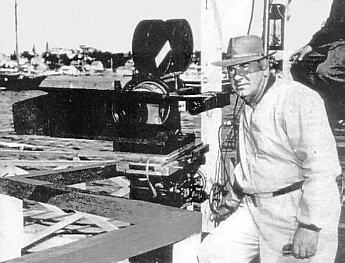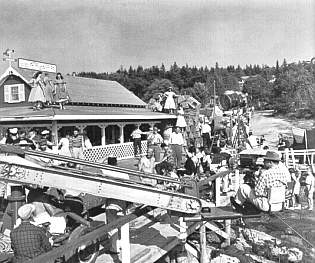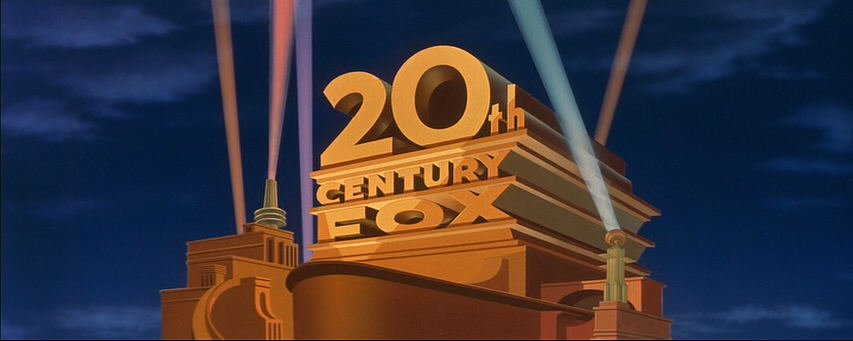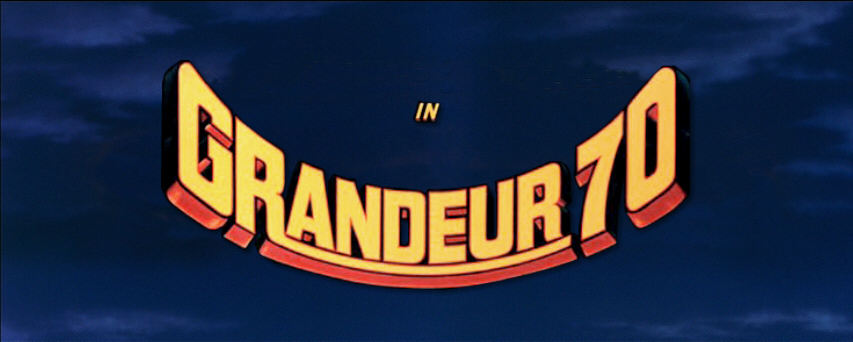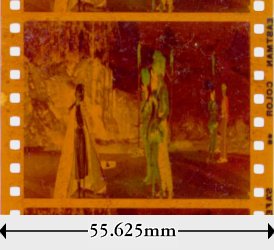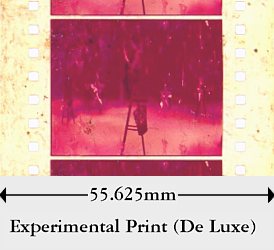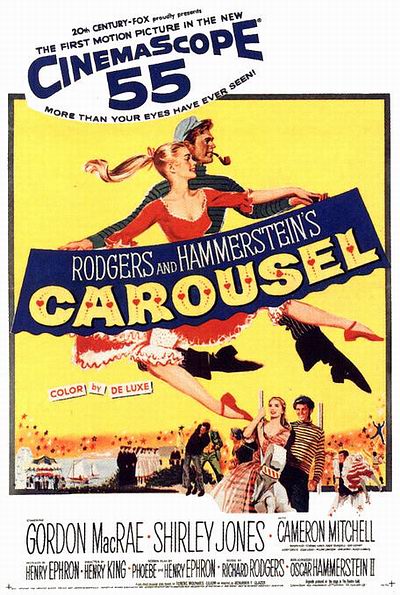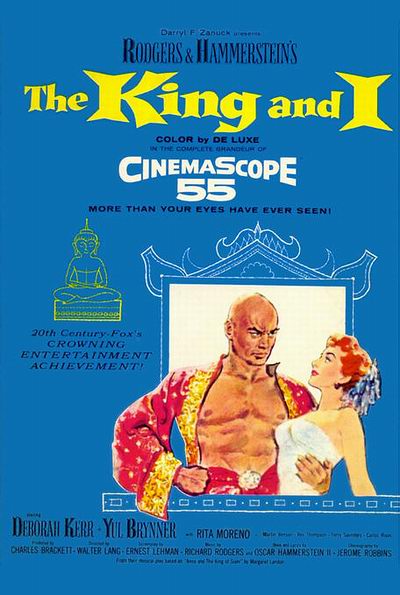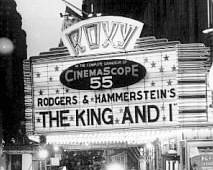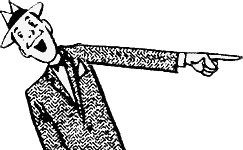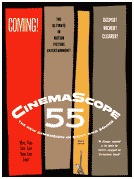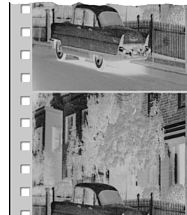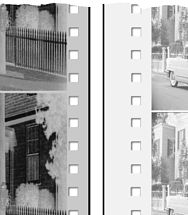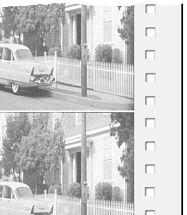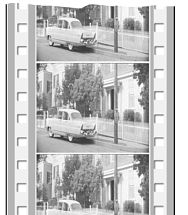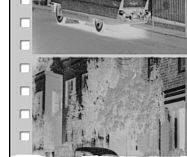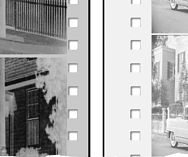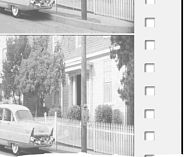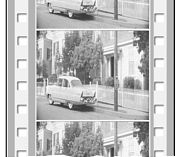
Image courtesy of Roy Wagner, ASC
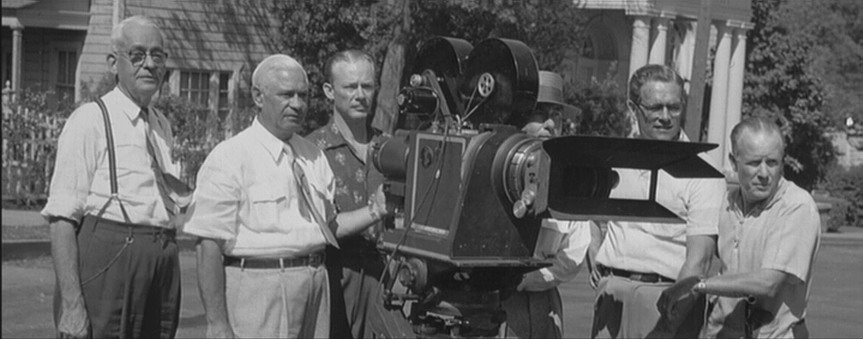
Sol Halprin, A.S.C. (second from left), 20th Century Fox Executive Director of Photography, Grover Laube (left), studio engineer, and Earl Sponable, Chief Research Engineer, not shown, developed the large format CinemaScope 55 system. The camera is the Fox 4x55, a Mitchell 70mm camera built circa 1930 and converted by the Fox camera department to handle the 55.625mm Eastman negative. Fox initially had to handle the slitting and perforation of the negative in their own laboratory. Eastman Kodak soon produced the necessary film for the process in the requisite dimensions and perforations. Both the negative and the planned 55mm print used the small Fox Hole perforations developed for the 35mm version of CinemaScope.
Image from a CinemaScope Fox Movietone newsreel.Note For Purists: The term Fox Hole is a nickname, dating back to 1953, for the CinemaScope perforations specified by Fox. The actual technical name is a CS-1870 perf. or an ASA PH22.101. The term "CS-perf" is also used.
Below: A couple of CinemaScope 55 promotional images created for exhibitors to tout the quality of the new system and encourage the installation of full four track magnetic stereophonic sound where it had been resisted up to that time. Fox declared that CinemaScope 55 films would be released only with magnetic sound. Fox derived very little income from the installation of magnetic stereo in theatres. They had an operating division that could provide CinemaScope gear but there were many sources for the necessary penthouse sound playback gear, amplifiers, and speakers. Fox was genuinely attempting to associate quality presentation with the CinemaScope name.The aspect ratio may be exaggerated substantially, a tradition in CinemaScope promo artwork. The display of five screen speakers was almost a red herring as only two or three theatres ever ran an interlocked six track magnetic film with the two features produced in the system. Virtually all theatres relied on the four track sound, with three screen channels, that were applied to the projection print.
CinemaScope 55 promos courtesy of Roy H. Wagner, ASC
Daily Variety, Wednesday, November 16, 1955
'Carousel' Rushes Steal Show As 20th Demonstrates 55m-To-35m TechniqueA demonstration of 20th-Fox's new CinemaScope photographic technique of filming on 55m and reducing to 35m for projection was given at the studio yesterday in four screenings of a 25-minute reel narrated by Darryl F. Zanuck.
Impressive as was the process, it was the rushes from the upcoming "Carousel" that stole the show, however. The scenes shown were a tremendous teaser for the musical due for release next February, holding out the promise of a sock piece of entertainment.
Reel, which is available for exhibitor screenings, demonstrated the method of filming big and then reducing to standard size C'Scope provides a grain-free, clearer, brighter and undistorted picture. It's costly, Zanuck's narration stating use of 55m adds approximately $200,000 to a picture's budget. He declared the end result is worth the additional cost, as was the several millions of dollars 20th-Fox has laid out in getting 55m raw stock manufactured, rebuilding laboratories capable of processing the footage, and having cameras and projectors manufactured. Cameras cost approximately $50,000 each, Zanuck said.
Narration pointed up, and the scenes demonstrated, that the 55m-to-35m method has eliminated the annoying distorting and fadeoff at each end of the screen that has been a bug of most previous C'Scope pix. There's no distortion, either standing close right or left of the screen, for the viewer. However, picture becomes even more sharp and beautiful when seen from a distance.
Twentieth-Fox plans to use the method for all future lensing and, in general, will follow the practice of reducing to 35m for print sizes so that any theatre presently equipped for C'Scope will be able to have top quality. "Carousel" will go out that way, although company will roadshow the upcoming "King And I" and other biggies from time to time in 55m size in a few, selected theatres.
The best laid plans of mice and men...
As screen sizes grew, the increased magnification of the small 35mm frame produced objectionably visible grain and screen brightness suffered. Paramount had addressed this problem with their large negative VistaVision in 1953/1954. 20th Century Fox responded to the need for improved print quality in 1955 with the development of the CinemaScope 55 system. Using an Eastmancolor negative 55.625 mm wide and a frame 8 perforations high, the Fox 4x55 camera and new CinemaScope lenses recorded a picture four times the size of 35mm CinemaScope. In 1929 Fox had developed a 70mm large format system they called "Grandeur". A few feature films had been made in the process but the cameras had been shelved for 25 years when Fox engineers dusted one of them off and had it converted to handle the special 55.625mm negative. Working with Bausch & Lomb optical company, a new set of larger anamorphic lenses was developed to cover the four times larger image.
Top: Veteran cinematographer Charles G. Clarke, director of photography on Carousel, with the single CinemaScope 55 camera used on the production. Bottom: Location rehearsal in Boothbay. This is for the standard 35mm CinemaScope version. (Photo courtesy of International Film Archive)
With just one camera modified, the studio began production of Rodgers & Hammerstein's Carousel in Boothbay Harbor, Maine. Initially filming was done in both 55mm and 35mm CinemaScope. The 35mm version was shortly abandoned as studio chiefs gained confidence in the larger format system.
Goosebump Raising Titles - Part 2
The image quality of CinemaScope 55 was better than the artwork commissioned to introduce it. Unfortunately, the public didn't perceive much difference between CinemaScope and its large format brother, no doubt due in part by Fox' marketing methods. Newman's fanfare music for CinemaScope probably helped confuse the differences between the 35mm and 55mm formats in the minds of patrons. It is also quite possible that the image quality of the prints made by DeLuxe Labs did not fully convey the superiority of the large negative. (See Note on Technicolor, below)
In 1961, Fox re-issued The King and I using 70mm prints optically converted from the 55mm negative. This hybrid process was dubbed "Grandeur 70". Don't let the numbers fool you. A 70mm print from a 55mm negative is an optical REDUCTION, not a blowup.
Artwork courtesy of Mike Van Eaton
Van Eaton Galleries
Film scans courtesy of Robert C. Weisgerber
Surviving samples of CinemaScope 55 negative and an experimental 55mm print without the six magnetic soundtracks. Both samples are from Carousel. No 55mm theatrical release prints were planned for that film.
While the camera negative was 8 perforations high, the planned 55mm print would be reduction printed to just 6 perforations. This allowed room for six magnetic sound tracks. Ultimately neither Carousel nor The King and I were ever shown in 55mm, and no record of a 55mm print exists. Instead they were both reduction printed as standard 35mm CinemaScope. The use of the larger negative, even after being reduced to 35mm, resulted in a claimed 50% improvement in clarity and definition. After The King and I in 1956, 20th Century Fox abandoned CinemaScope 55 in favor of doing their large format productions in Todd-AO, in which they acquired a financial interest. While comparing the frame area to other large format systems might lead one to believe that CinemaScope 55 would offer the best image of the lot, this probably was not true. The optics were much more complex than Todd-AO and suffered the same drawbacks as those used in conventional 35mm CinemaScope. Fox's decision to adopt Todd-AO can be considered a strong indication that working with the large CinemaScope 55 anamorphic system was difficult and, quite likely, more costly than the 65mm/70mm format.
It is interesting to note that many of the first release prints of The King and I were made by Technicolor in their dye transfer process even though no screen credit is given. It is quite possible that the Technicolor process preserved the image quality of the large format negative much better than the Eastmancolor prints produced by Fox's own DeLuxe Labs. Similarly, M-G-M had Technicolor make the 35mm anamorphic prints for their first large format production, Raintree County, filmed in Ultra Panavision 70 in 1957.
The Roxy Theatre in New York, promoted CinemaScope 55 in its showings of both Carousel and The King and I.
Click the page to view the CinemaScope 55 trade ad full size.
Keen-eyed readers may recognize the scene in the experimental CinemaScope 55 as being shot on the Fox back lot during the filming of Good Morning, Miss Dove, starring Jennifer Jones.
Read the Films in Review article on the new CinemaScope 55 system. Be prepared for some sloppy reporting. Click the cover to read the article.
You are on Page 6 of








E-mail the author
CLICK HERE©1996 - 2014 The American WideScreen Museum
http://www.widescreenmuseum.com
Martin Hart, Curator
